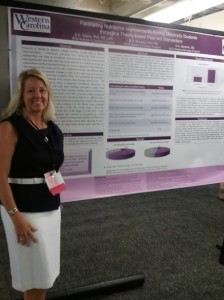 We asked April Tallant, a WCU Professer and also the Principle Investigator for the Rural Eating Assessment Project (REAP), to give us some information on Barriers to Healthy Eating; what are they, how do they affect WNC and what we can do to change them. Take a moment to learn more about this important issue with her interview below:
We asked April Tallant, a WCU Professer and also the Principle Investigator for the Rural Eating Assessment Project (REAP), to give us some information on Barriers to Healthy Eating; what are they, how do they affect WNC and what we can do to change them. Take a moment to learn more about this important issue with her interview below:
Could you define what is a “Barrier to Healthy Eating?”
A barrier to healthy eating is anything that stands in someone’s way or prevents someone from eating healthy.
What are the most common barriers to healthy eating?
The most commonly cited barrier in the research literature is cost. Other barriers may be lack of accessibility to healthy foods, limited or lack of transportation to food access venues, or having someone in the household that does not like healthy food.
Are there any barriers that are specific to WNC?
That is one of the main missions of the Rural Eating Assessment Project that was conducted this summer. Data collection is complete and we are in the preliminary stages of analyzing to find the answers to this question and many more.
What do you feel are the solutions to combating these issues?
Some policy changes would help. Making it easier for farmers markets to accept electronic benefit transfer (EBT) cards would be tremendously helpful. Some farmers markets accept them, but it is not an easy process. The process should be streamlined.
Why is it important to have groups like MountainWise spreading awareness of this issue?
MoutainWise is instrumental to not just spreading awareness of this issue, but putting action plans in motion to solve the problem. MountainWise is so collaborative. They bring organizations and groups together that have similar goals. Resources can be shared and progress can be made. I am impressed with the positive changes they continue to make in our region.
Is there anything else about your research that you would like to share?
Stay tuned! Our full report will be available this fall!
